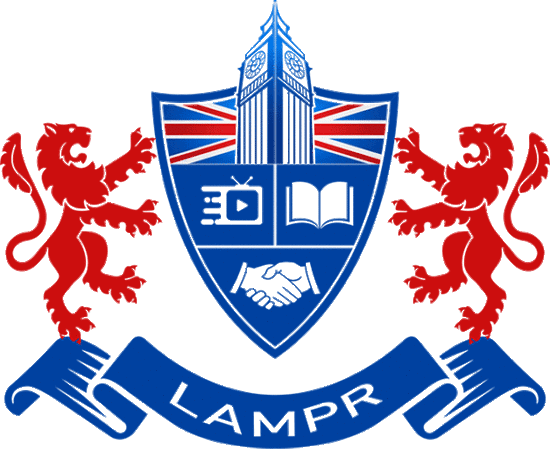Course Description
BRM Business Relationship Management course is one of the important courses in today's training world, and an essential part of the skills required in the science of management and public relations for successful companies, institutions, and ministries.
The Importance of the BRM Course
BRM is described as the skills that lead to more ability, discipline, and development to build partnerships, raise the value of work, and achieve the goals of organizations to achieve their ambition and mission.
Business relationship management promotes BRM inside and outside the organization and creates an unlimited supply of energy needed to develop culture, build partnerships, raise the value of work and organizations, and achieve goals.
Qualified employees in this course have leadership qualities that qualify them to support all employees in the organization, improve the quality of their thinking and leadership, and strengthen relationships.
What will the trainees get after the course?
Interns receive training that helps them possess the skills of a labour relations manager so that they can act as a link between work and customers by understanding the operational and developmental needs of the business.
Trainees are trained to possess business analysis skills and experience that enable them to play a pivotal and essential role in the organizations in which they work, leading to raising the level of business, supporting wide sectors of jobs, improving the image of the institution, and strengthening the bonds of cooperation within it.
Employees with a relationship management course can understand and analyze services, support continuous service improvement, and manage supportive relationships for services.
Topics of BRM's Business Relationship Management Course 2024
The course includes many sections and parts that integrate daily during the training to possess the required skills, which include:
First: Asset Management and Configuration:
How to manage the life cycle of assets, including hardware, software, intellectual property, licenses, and collateral. This includes managing usage, disposal, compliance, inventory, sustainability, cost optimization, and asset portfolio protection.
helps relationship managers improve investment decisions and take advantage of opportunities. With their continued commitment to international asset management standards,
Second: Business Analysis (IT Operations):
Provide the ability to visualize, express, and solve complex problems and concepts; and training in the skill of recognizing how to make disciplined decisions based on available information.
Third: Continuous improvement of services.
How to identify and explore opportunities for improving services and business, the ability to lead analysis, prioritize and implement improvements and efficiencies, thus ensuring that the organization derives maximum value from services.
Fourth: Ownership and Initiative.
responsibility for understanding and analyzing problems and proactively solving technical problems, ensuring that technical solutions continue to meet business requirements.
Fifth: Relationship Management:
How to identify, analyze, manage, and monitor relationships within the organization, between the organization, and among stakeholders. Through consultation and impact analysis, clarify mutual needs and commitments.
Sixth: focus on services:
How to maintain and focus on the full life of service delivery, from design and development to delivery and operation.
Seventh: Knowledge of the framework of service management:
Service management principles and processes apply to the application of technical
knowledge in project or program activities for the BRM Business Relationship Management course
Eighth: Service Reports:
Obtain management information and integrate agreed key performance indicators (KPIs) into product or service metrics that support service management for a particular product or service.
Ninth: Strategic Thinking
To provide a comprehensive perspective on business issues, events, and activities, as well as their broader and long-term consequences. This can include identifying patterns, standards, policies, roadmaps, and vision data. And also focus on results rather than solutions and activities.
Tenth: technical comprehension:
Provide responsibilities and tasks for the job, including the application of the required breadth and depth of technical knowledge. And how to keep abreast of industry developments to achieve cost-effective use of new and emerging tools and technologies.
Eleventh: Customer Focus:
Understand users and determine who they are and what their needs are based on evidence. User stories and propose design methods or services to meet these needs and engage in meaningful interactions and relationships with users. Put users first and manage competing priorities.
BRM Business Relationship Management course
The Business Relations Manager is responsible for day-to-day relationships with business stakeholders, ensuring consistency in engagement across the company. At this level, effective training will be provided in the fields of
First: Asset Management and Configuration:
Track, record, and correct information to protect assets and components.
Second: Business Analysis (IT Operations):
Investigate problems and opportunities in current processes and contribute to recommending solutions to them. And how to work with stakeholders to identify potential goals and benefits available.
Third: Continuous improvement of the service:
Identify opportunities to improve the process with guidance and contribute to the implementation of the proposed solutions.
Fourth: Ownership and Initiative.
How to own a problem until a new owner is found or mitigates or solves the problem.
Fifth: Relationship Management:
Influence stakeholders and manage relationships effectively. How to build long-term strategic relationships and facilitate and deliver business results.
Sixth: Focus on the service:
Take input and create an effective, coherent framework.
Seventh: Knowledge of the framework of service management:
qualify an understanding of the Level 3 Service Management Framework.
Eighth: Service Reports:
Produce relevant reports in standard format within an agreed time frame, and work with important stakeholders to discuss any changes in reporting processes as well as how to add a comment that explains the dataset.
Ninth: Strategic Thinking
work within a strategic context and communicate about how activities meet strategic objectives. contribute to the development of strategy and policies.
Tenth: technical comprehension:
Understand the basic technical concepts related to the role and apply them with guidance.
Eleventh: Customer Focus:
Identify users or stakeholders and interact with them to collect evidence of user needs. Identify and understand the research that best suits the user's needs and use quantitative and qualitative data about users to turn user focus into results.
Jobs as Business Relations Manager.
The Director of the Department of Labor Relations is the person responsible for managing and delivering the communication plan in the organization. In this position, the manager must:
• Attend business and management meetings.
• Provide communication and information for all relevant digital and technological activities.
Activities and Training Methods
• Training lecture
• practical applications
• Panel discussions and activities
• Field visits
Features
- Airport-to-hotel transfer.
- Coffee breaks.
- Study materials.
- Farewell open buffet.
- London tours, Buses & boats.
- Hotel-to-airport transfer.






